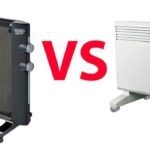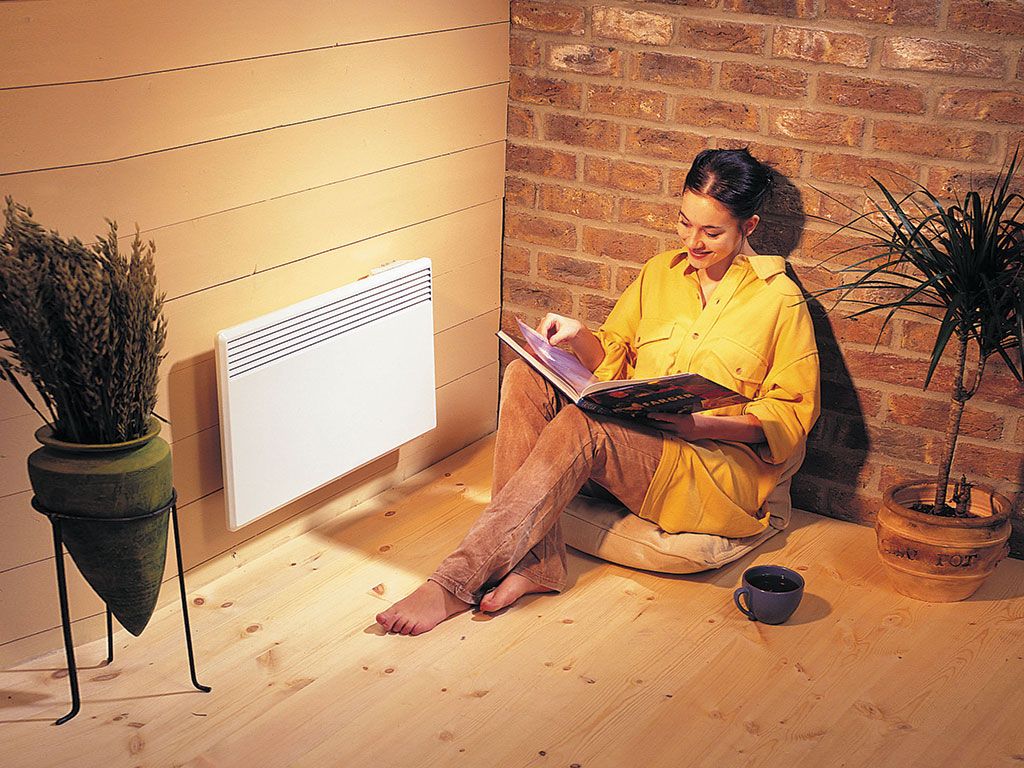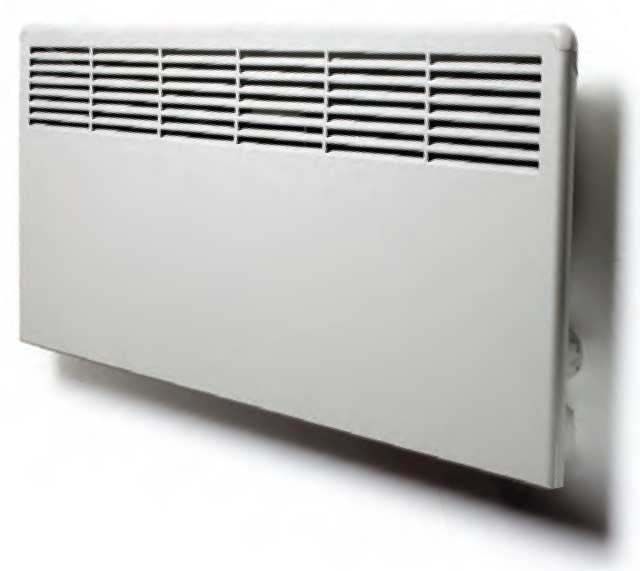What is the difference between a convector and an oil radiator?
Climate-controlled household appliances are purchased for additional heating of a room for various reasons. Some people want to create a separate comfortable relaxation area. Some people prefer a warmer, more comfortable environment throughout the house. Sometimes autonomous heaters are the only available heating method.
The variety of models offered by manufacturers, differing in their technical characteristics, makes it difficult for consumers to choose the necessary device. Power, compactness, efficiency and safety. E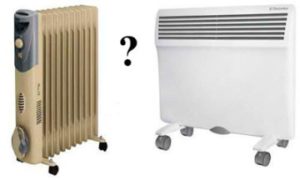 These parameters must be taken into account when choosing climate control equipment, regardless of the location of their installation, offices or residential premises.
These parameters must be taken into account when choosing climate control equipment, regardless of the location of their installation, offices or residential premises.
The most widespread are two types of heaters:
- convector type;
- oil radiators.
Heaters with open heating elements (spirals) equipped with a reflective screen are in little demand due to low efficiency and high energy consumption.
The content of the article
Convector heaters
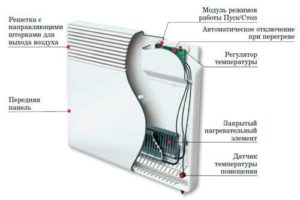 The operating principle of the convector is based on the natural principles of heat exchange. Cold air, entering through the intake openings into the convector, where heating elements of various designs are located, is heated, and through the output channels (nozzles, blinds) enters the room. The natural convection flow of warm and cold air ensures constant heat exchange of air masses and uniform temperature equalization inside the room.The time to warm up the room depends on the power of the heating elements installed in the convector, their design, the shape of the heater body and the volume of the room itself.
The operating principle of the convector is based on the natural principles of heat exchange. Cold air, entering through the intake openings into the convector, where heating elements of various designs are located, is heated, and through the output channels (nozzles, blinds) enters the room. The natural convection flow of warm and cold air ensures constant heat exchange of air masses and uniform temperature equalization inside the room.The time to warm up the room depends on the power of the heating elements installed in the convector, their design, the shape of the heater body and the volume of the room itself.
Features of the convector
As already noted, the air is heated through the use of a heating element. Air flow distribution can be natural or forced using a fan. The shape and design of intake and outlet channels may vary. The channel cross-section can be fixed or adjustable in manual or automatic mode. The housing can be used as a floor or wall heater. Models have appeared that are used as baseboards with a heating system. Any design of convector heaters provides more uniform and faster heating of air masses, with low energy consumption.
Oil radiators
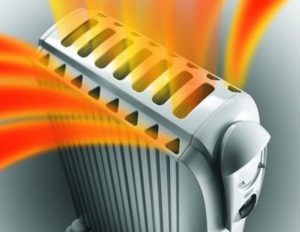 The operating principle of an oil cooler is based on heating a certain volume of air in contact with the surface of the heater body or located in close proximity to it. Heat exchange occurs within a certain area and the convection component in this case is weakly expressed. When using oil radiators, the room is gradually heated due to an increase in the overall air temperature. As the temperature increases, more intense heat transfer occurs. To create additional convection and reduce heating time, many models of oil radiators are equipped with fans. In essence, this is already a heater that combines two types, oil and convection.
The operating principle of an oil cooler is based on heating a certain volume of air in contact with the surface of the heater body or located in close proximity to it. Heat exchange occurs within a certain area and the convection component in this case is weakly expressed. When using oil radiators, the room is gradually heated due to an increase in the overall air temperature. As the temperature increases, more intense heat transfer occurs. To create additional convection and reduce heating time, many models of oil radiators are equipped with fans. In essence, this is already a heater that combines two types, oil and convection.
Design features
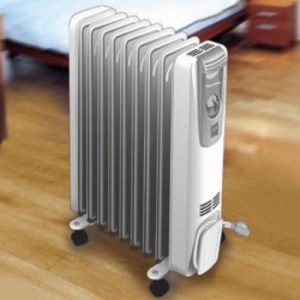 The shape of the oil cooler housing depends on the design of the radiator (heat exchanger) in which the coolant (mineral oil) is located.The tubular heat exchanger takes up less space. In this case, the housing structure has a minimum thickness. The use of heat exchangers, arranged in the form of connected individual sections, similar to central heating radiators, increases the thickness of the device itself, but at the same time the useful contact area between the body and the air masses increases. These models are equipped with fans, which reduces the time it takes to warm up the room to certain temperatures. Design options may include use as a floor heater (the most common models) or a wall heater.
The shape of the oil cooler housing depends on the design of the radiator (heat exchanger) in which the coolant (mineral oil) is located.The tubular heat exchanger takes up less space. In this case, the housing structure has a minimum thickness. The use of heat exchangers, arranged in the form of connected individual sections, similar to central heating radiators, increases the thickness of the device itself, but at the same time the useful contact area between the body and the air masses increases. These models are equipped with fans, which reduces the time it takes to warm up the room to certain temperatures. Design options may include use as a floor heater (the most common models) or a wall heater.
The power of the oil cooler is determined by the power of the installed heating element. You can calculate the required power to heat a certain area yourself. But, as a rule, such data is contained in the instructions supplied with the device and such information can be obtained from the seller.
All modern oil heaters are designed to operate in several modes. Mechanical or electronic monitoring and control units simplify their maintenance.
Convector or oil radiator
There are no standard recommendations for choosing one type of heater over another. It all depends on the expected conditions and operating modes of the climate control equipment. Typically, the consumer is only interested in a few indicators, reliability, efficiency and cost. Based on these indicators, he makes his choice. The only thing that can be added is that all modern devices meet all the declared indicators in their technical characteristics and are capable of creating additional coziness and comfort.


